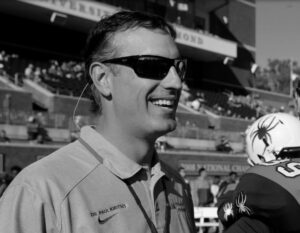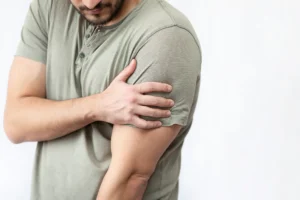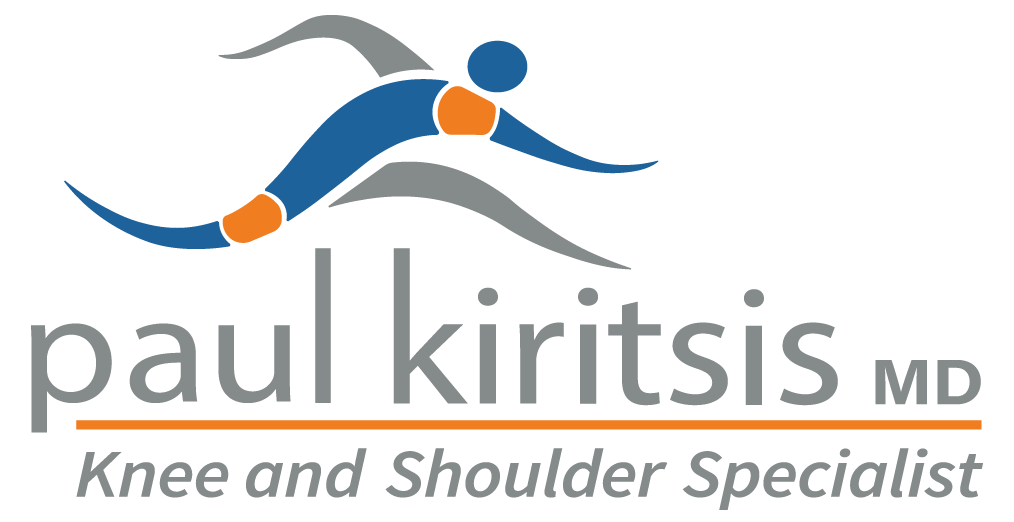Can you golf after shoulder replacement surgery? Yes, with proper care and rehabilitation, most patients can return to golf within 4-5 months after shoulder replacement surgery.
This post covers the essential phases of post-surgery recovery and offers expert tips to safely reintegrate into the sport you love.
Key Takeaways
- Shoulder replacement surgery, including total shoulder arthroplasty and reverse shoulder arthroplasty, aims to alleviate pain and improve range of motion, with most patients returning to golf within 4-5 months post-surgery.
- Recovery from shoulder surgery involves an initial phase focused on healing and light exercises and a subsequent rehabilitation phase to regain strength and flexibility, which includes physiotherapy and tailored exercises for golfers.
- Golfers post-surgery should take precautions such as modifying swing mechanics, adhering to a physical therapy plan, and being attentive to the body’s signals to prevent overexertion while gradually reintroducing the sport to ensure a successful return to golf.
Understanding Shoulder Replacement Surgery
Shoulder replacement surgery stands as a pivotal intervention for individuals grappling with severe pain and stiffness in the shoulder region, predominantly stemming from conditions such as arthritis or degenerative joint disease. The central aim of this procedure is to substitute the impaired arthritic shoulder joint with a high-functioning artificial counterpart, commonly referred to as a prosthesis or implant.
Click here to learn more about Precision Shoulder Replacement
The overarching goal of shoulder replacement surgery is to significantly improve the range of motion in the shoulder and alleviate pain, thereby enhancing the quality of life for patients. Encouragingly, procedures such as total shoulder arthroplasty and reverse shoulder arthroplasty (also recognized as reverse shoulder replacement) consistently demonstrate high success rates, offering substantial relief from discomfort and marked improvement in the shoulder’s range of motion.
The Timeline for Teeing Off Post-Surgery
You’ve undergone surgery and you’re anxious to return to the course. You’re probably wondering, when can you start teeing off? Well, patience is key as your body needs time to heal. Most patients can expect to return to golf within 4-5 months after surgery, with an initial recovery phase focused on healing and a subsequent rehabilitation phase for strength building.
Successfully completing a physical therapy regimen is paramount to achieving the highest possible level of strength and mobility in your shoulder post-surgery. The regimen for total shoulder replacement typically comprises a series of targeted exercises and stretches. These are meticulously designed to not only enhance the range of motion and strength of your shoulder but also to optimize its overall functionality and alleviate pain.
The timeline for resuming physical activities, including sports like golf, varies significantly based on individual health factors and the pace of recovery. It is generally advised that patients cautiously begin reintegrating physical activities into their routine no earlier than 6 weeks after surgery. However, this should only be done following explicit clearance from either myself or the physical therapist, ensuring a recovery that is both safe and effective.
Initial Recovery Phase
Post-surgery, the vital initial recovery period extends from several weeks to a few months. This phase is focused primarily on healing and the avoidance of strenuous activities. During this initial phase of recovery, it is generally recommended to engage in light exercises as directed by your physical therapist for about 10 to 15 minutes, 2 or 3 times a day. This helps to prevent stiffness in the elbow and hand.
As your healing progresses, the introduction of strengthening exercises typically occurs after 8-12 weeks, subject to approval from the surgeon. Activities like gentle swimming can begin at 12 weeks, and a gradual return to golf may be considered after 4-5 months.
It’s a journey, and every step forward counts!
Rehabilitation and Strength Building
After moving out of the initial recovery phase, the next step is to kickstart the rehabilitation process. This phase is where physical therapy comes into play, playing a crucial role in regaining strength and flexibility after shoulder replacement surgery.
Physiotherapy, with manual therapies, can assist in enhancing flexibility, essential for a seamless and effortless golf swing, while also facilitating rehabilitation, mitigating the risk of injury, and enhancing overall health advantages after reverse total shoulder replacement.
Golf-Specific Considerations After Shoulder Surgery
As you prepare to step back on the green, you may notice a slight change in your swing mechanics due to the surgery. This is completely normal. However, modifying your golf mechanics to accommodate these changes can be beneficial.
Achieving Significant Pain Relief for Your Game
Significant pain relief is one of the most gratifying outcomes of the Precision Shoulder Replacement surgery I perform. Imagine swinging your golf club free of pain and discomfort!
Research has indicated that shoulder replacement surgery provides a safe and efficient method for significantly decreased pain during the golf swing in individuals with advanced shoulder osteoarthritis, making a significant difference in their quality of life. In addition, many patients see an improvement in their golf scores and a reduction in their handicap.
Risks and Precautions on the Fairway
Golfers with shoulder prostheses must engage in targeted physical therapy to restore mobility and strength as returning to golf post-surgery comes with a unique set of risks and precautions. Moreover, avoiding unsupervised exercises that could result in discomfort and being proactive in addressing stiffness and reduced range of motion caused by muscle shortening during the procedure can help mitigate these risks.
Strategies to Prevent Injury
Injury prevention is a key aspect when returning to the golf course, especially when playing golf after a long break. Proper warm-up, swing adjustments, and gradual progression in golfing activities are some of the strategies that can help prevent injury.
Making modifications to your swing by shortening the backswing or reducing the follow-through can help achieve a more controlled swing. If there are limitations in shoulder rotation, using longer clubs can provide a suitable adaptation. Also, avoiding heavy rough and bunkers can reduce risk of injury. I recommend using a tee to hit all shots the first few times a golfer returns to the course.
Gradual progression in the rehabilitation process for returning to golf after shoulder surgery facilitates the safe adaptation of the body to the physical demands of the sport.
Enhancing Your Golf Performance Post-Surgery
After shoulder replacement surgery, your performance on the course can potentially improve with proper rehabilitation and adherence to physical therapy. Each patient’s situation is unique, however, over time, you may achieve relief from pain and improved range of motion, potentially leading to enhancement of your golf swing.
Your return to golf should start with gentle swings, gradually intensifying as your strength improves. Initially, individuals should focus on small game activities, such as putting and chipping, before progressing to full swings. It is essential to incorporate appropriate warm-up routines, stretching, and strengthening exercises throughout the entire duration of the golf rehabilitation program.
Long-Term Outlook for Golfers with Shoulder Implants
What can golfers who have undergone shoulder replacement surgery expect for the future? Well, with proper care and rehab, they can expect a high chance of pain-free play and a similar or improved performance in the long run.
Although long-term effects of shoulder replacement surgery may result in slight limitations to golf performance, the majority of golfers can resume playing within one year after the surgery. Regular follow-up appointments with a shoulder surgeon and adherence to rehabilitation exercises are crucial for achieving optimal recovery and enhancing performance.
Navigating Challenges and Celebrating Milestones
The journey back to golf after shoulder replacement surgery can be tough but rewarding. Typical obstacles that golfers encounter following shoulder replacement surgery include stiffness and reduced range of motion. Addressing these challenges by commencing with gentle swings and gradually intensifying their swings as their strength improves, coupled with targeted physical therapy, aids in the successful restoration of strength and motion.
Given the predominantly positive feedback from golfers on shoulder surgery, a successful return to the sport is a considerable milestone that deserves celebration.
Summary
In conclusion, golfers who undergo shoulder replacement surgery can indeed return to the game they love. With proper care, rehabilitation, and adherence to physical therapy, golfers can potentially experience significant pain relief, improved performance, and a high chance of pain-free play in the long run.
Remember, the journey to recovery may be challenging, but with patience, perseverance, and a positive mindset, the reward of comfortably swinging your clubs again is well worth it.





